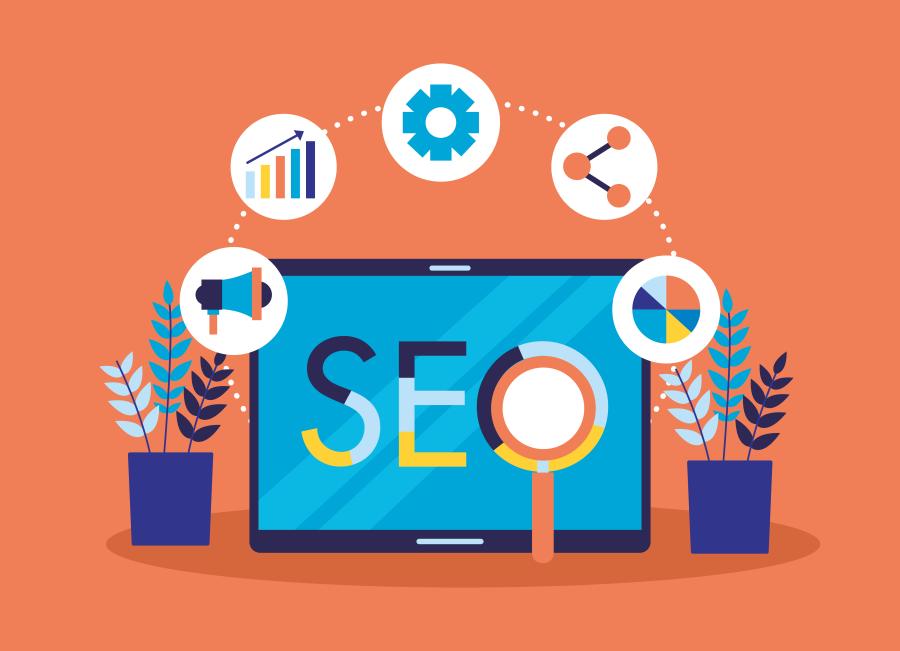As the cornerstone of web visibility and traffic, Search Engine Optimization (SEO) is not just a buzzword; it's a critical component of a successful online presence.
There are 4 types of SEO, each with its own rules, techniques, and outcomes. This guide will delve into these strategies, exploring how On-page SEO, Off-page SEO, Technical SEO, and Content SEO can be used together to forge a dynamic digital marketing strategy.
What is Technical SEO?
Technical SEO refers to the optimizations that are primarily concerned with the infrastructure of a website. It's a broad term that encompasses a variety of actions designed to improve the technical aspects of a site, making it more efficient for search engine spiders to navigate. This includes elements such as site speed, mobile-friendliness, indexing, site architecture, structured data, security, and more.
Site Speed Optimization
In a world where a delay of a few seconds can mean the loss of a potential customer, site speed is paramount. Site speed optimization involves reducing load times to ensure that visitors can access your content quickly and seamlessly. This not only enhances user experience but also significantly impacts your search engine rankings.
Google has explicitly mentioned site speed as a ranking factor, making it a top priority for any site, in any industry. Techniques such as compressing images, leveraging browser caching, and minimizing code are just a few ways to improve your site speed.
HTTPS and Secure Connections
Security is a top concern for both users and search engines. HTTPS (or Hypertext Transfer Protocol Secure) indicates that a website is using a secure connection, encrypting data between the server and the user's browser. This prevents interception of sensitive information, which works to build trust with your visitors.
Google has confirmed that HTTPS is a ranking signal, and browsers like Chrome now label non-HTTPS sites as 'not secure,' which can deter users from visiting your site.
Crawlability and Site Structure
Crawlability is a search engine's ability to access and crawl through your website's content. If a search engine cannot crawl a site effectively, it's unlikely to index the content; this means it won't appear in search results. Ensuring that your site is easily navigable by search engine bots involves creating a clear and logical site structure, using a well-organized sitemap, and employing proper use of robots.txt files to guide crawlers.
A well-structured site helps search engines understand your site's hierarchy in addition to finding content. It also provides a better User Experience (UX). This may include having a clear hierarchy in your navigation, using breadcrumb menus, or implementing internal linking strategies that connect your content in meaningful ways.
Technical SEO Audits
A technical SEO audit is like a comprehensive health check-up for your website. It's a process that scrutinizes every technical aspect of your site to identify issues that could be hindering its performance in search engine rankings. Conducting a technical SEO audit is a critical step in optimizing your website, as it reveals both its strengths and its weaknesses to address.
To conduct a technical SEO audit, you’ll generally follow these steps:
- Crawl Your Website: Use SEO crawling tools like Screaming Frog, Ahrefs, or SEMrush to simulate how search engines crawl your site. This will help you see your website from a search engine's perspective.
- Analyze Site Speed: Tools like Google's PageSpeed Insights can provide you with insights into your site's loading times and offer recommendations for improvement.
- Check Mobile Responsiveness: Google's Mobile-Friendly Test can tell you if your pages are mobile-friendly, plus highlight issues that need fixing.
- Assess HTTPS Security: Ensure that your site is using HTTPS and that it's implemented correctly across all pages without mixed content issues.
- Evaluate Crawlability and Indexing: Check your robots.txt file and XML sitemap. Use Google Search Console to ensure that search engines can index your site effectively.
- Review Site Structure: Analyze your website's structure and navigation to ensure it's logical, efficient, and supports both user experience and search engine understanding.
What is Content SEO?

Content SEO is the art of creating high-quality, relevant content that resonates with both search engines and human audiences. Of the 4 types of SEO, this strategy is all about understanding the delicate balance between crafting informative, valuable content and optimizing to perform well in search engine rankings.
Keyword Research and Content Planning
The journey to effective Content SEO begins with keyword research. This foundational step involves identifying the terms and phrases your target audience uses when searching for information, products, or services related to your business. Tools like Google Keyword Planner, Ahrefs, or SEMrush will provide insights into factors like search volume, competition, and relevance. They will additionally help you identify the category of keyword to use, as there are various types of SEO keywords; these include but are not limited to shorttail, longtail, customer defining, and geo-targeting.
Next, you’ll map out your content strategy, deciding on topics that will resonate with your audience while incorporating your chosen keywords naturally. A well-thought-out content plan ensures that you cover a broad spectrum of relevant topics, which can help establish your site as an authoritative source in your given niche.
Push for Valuable and Informative Content
Search engines prioritize content that provides real value to users — this means content that answers their questions, solves their problems or enriches their knowledge. To stand out, your content must be well-researched, thoroughly detailed, and directly aligned with your audience's interests.
Quality content is also more likely to earn backlinks from other reputable sites, a significant ranking factor for search engines. By focusing on the value, you not only improve your SEO but also build trust with your audience.
Content Freshness, Including Updating Existing Content
Search engines favor fresh content, as it often reflects the most current and relevant information. However, content freshness isn't just about churning out new articles; it's also about keeping your existing content up to date. Regularly revisiting and updating your older content can breathe new life into it while maintaining its relevance in search results.
Updating content can involve adding the latest statistics, reflecting recent developments, or expanding on topics with new insights. Besides helping to maintain your rankings, you’ll show your audience that you're committed to providing the most accurate and timely information.
Measuring Content Performance and User Engagement
Creating content is still only half the battle. The other half is understanding how that content performs and how users engage with it.
Measuring content performance is crucial for refining your Content SEO strategy and ensuring that your efforts yield the results you want. Some of these indicators include:
- Traffic: The volume of visitors to your content is a primary indicator of its performance. Tools like Google Analytics can provide insights into how much traffic your content is attracting, as well as where that traffic is coming from.
- Rankings: Where your content ranks for targeted keywords can give you an idea of its SEO effectiveness. Use rank-tracking tools to monitor your positions in search engine results pages (SERPs) over time.
- Engagement: Metrics such as time spent on a page, pages per session, and bounce rate (the percentage of visitors that land on a page and immediately leave) can tell you how users are interacting with your content. High engagement levels typically indicate that your content is resonating with your audience.
- Conversions: Ultimately, the goal of your content is to contribute to your business objectives, whether that's generating leads, sales, or sign-ups. Conversion tracking can help you understand how your content is driving these desired results.
What is On-page SEO?
On-page SEO is the practice of optimizing individual web pages to rank higher and earn more relevant traffic in search engines. It involves aligning various elements on your website, such as content, HTML tags, and images to make it as search-engine-friendly as possible.
Title Tags and Metadata
Title tags are one of the most important On-page SEO elements. They provide quick insight into the content of a web page and are a primary factor in the user's decision to click through from the SERP.
Title tags should be unique for each page. Ideally, they should be no longer than 60 characters to ensure they display properly on search engine results pages. They must include the main keyword for the page and, if possible, your brand name.
While not a direct ranking factor, meta descriptions play a significant role in click-through rates. They should be compelling, contain the primary keyword, and be around 155-160 characters long.
URL Structure and Permalinks
URL structure is another crucial On-page SEO factor that search engines (and users) consider. URLs should be clear and easy to read, with a structure that reflects the site hierarchy. Keep your URLs short, descriptive, and relevant to the page content. Use hyphens to separate words, as search engines read these as spaces.
Permalinks are the permanent URLs to your webpage posts, as well as categories and other lists of webpage postings. They should be consistent, following a predictable pattern to help users and search engines understand the page content.
Image Optimization and Alt Text
Images can enhance the UX on your site, but they can also contribute to On-page SEO when properly optimized. First, Ensure that images are compressed to reduce file size without compromising quality, as large images can slow down page load times. Use responsive images that adapt to different screen sizes for a better mobile experience.
Alt text (alternative text) describes an image to search engines; it is also used by screen readers for visually impaired users. Each image should have alt text that includes the SEO keyword for the page and describes the image accurately.
On-page SEO Best Practices
To ensure that your website provides value to your visitors, it's essential to adhere to On-page SEO best practices.
- Optimize Title Tags: Your title tag is one of the first things a search engine will evaluate on your page. It's also what users see in the search results, so it needs to be descriptive and relevant.
- Include Keywords: Place your primary keyword toward the beginning of the title tag for better visibility.
- Utilize Header Tags Effectively: Header tags (H1, H2, H3, etc.) help structure your content, making it easier for both users and search engines to read and understand.
- Ensure URL Structure Reflects Content: A well-structured URL provides both users and search engines with a clear indication of what the page is about.
What is Off-page SEO?

While On-page SEO focuses on optimizing elements within your website, Off-page SEO is all about what happens outside of it. This crucial aspect of SEO is about building your site's reputation and authority in the wider digital ecosystem. Off-page SEO strategies are designed to bolster your site's credibility and popularity, which are key factors that search engines use to determine rankings.
Link Building and Backlinks
Link building is the process of acquiring hyperlinks from other websites to your own. A hyperlink (usually just called a link) is a way for users to navigate between pages. Search engines use links to crawl the web; they will crawl the links between the individual pages on your website, and they will crawl the links between entire websites.
Effective link-building can significantly impact your site's ranking and visibility. However, it's important to focus on building high-quality backlinks from authoritative sites within your industry, as these are valued more highly by search engines. For instance, your strategy might be incorporating different types of backlinks in SEO, such as webinar backlinks, editorial backlinks, or social links.
Social Media Management
While social media management does not directly factor into rankings, it can still be an invaluable part of a strategy that encompasses all 4 types of SEO. Social media platforms are excellent channels for promoting your content and increasing its visibility.
Social media is also a powerful tool for building your brand; through your posts, you can establish a voice to make your content recognizable to audiences. Remember to always be actively engaging with your audience on social, as this may lead to more shares, higher visibility, and backlinks.
Local SEO and Google Business Profiles
For businesses with a physical location or a local service area, Local SEO is a must. It involves optimizing your online presence to attract more business from relevant local searches.
Your Google Business Profile (GBP) is a critical tool for Local SEO. It allows you to manage your online presence across Google, including Search and Maps. By verifying and editing your business information, you can help customers find you while informing them about your business.
Encourage your customers to leave reviews on your GBP. Positive reviews can improve your business's visibility in search results, and the feedback can influence potential customers.
Analyzing Off-page SEO Efforts
To ensure that your Off-page SEO efforts are paying off, it's crucial to analyze their impact regularly. This analysis helps you understand which strategies are working, where you can improve, and how your actions influence your website's authority and rankings.
- Traffic Data: Use UTM parameters and your web analytics platform to track the traffic that comes to your site from social media platforms.
- Local Rankings: Use Local SEO tools such as Local Falcon to track how your business ranks for relevant local searches in different locations.
- Review Analysis: Regularly read and analyze the reviews on your GBP. Responding to reviews can also show engagement with your customers.
- Competitor Analysis: If you're a local business, keep an eye on how competitors are performing in local search results, and what kind of Local SEO tactics they are using.
Take the Stress Out of SEO with Epic Web!
SEO can be complicated, and that’s why our expert team is here to guide you through the process with data-driven insights and analysis. Contact us today!



